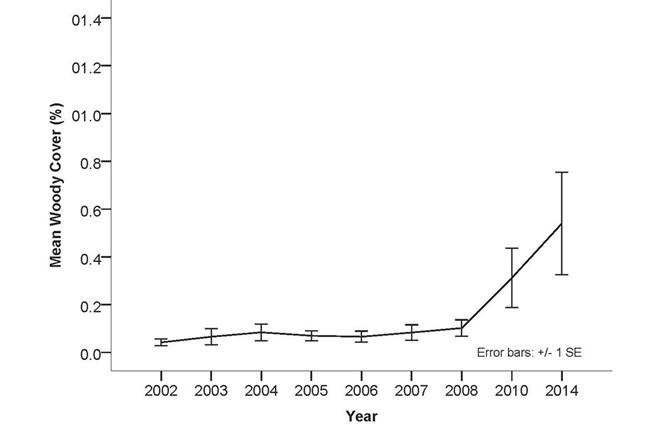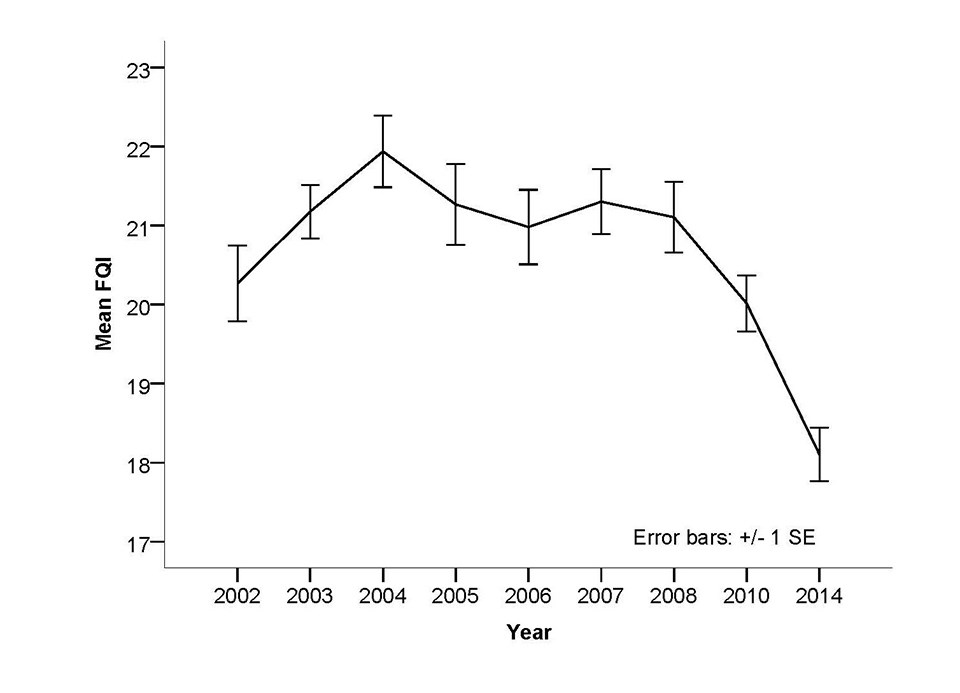Last updated: October 25, 2024
Article
Vegetation Community Monitoring at Tallgrass Prairie National Preserve

NPS-Photo
Tallgrass prairie once covered 150 million acres of the central United States. That area is almost the size of the state of Texas! Experts estimate that only 4% of tallgrass prairies remains. The Tallgrass Prairie NP preserves, protects, and interprets the prairie ecosystem. Scientists collect data related to the status and trends of prairie vegetation. They also research the effects of management on vegetation.

NPS
Over the last decade, fewer cattle were stocked and fires were less frequent. At the same time, bare ground declined and woody species increased slightly. The number of plant species and floristic quality was stable through time, except for a decline in 2014.

NPS
We will understand these trends better with future observations. The data collected is valuable for helping park managers. The data allows them to assess their goals and develop future action plans.
View the full report. (pdf)
Find out more about the Heartland Inventory & Monitoring Network.
Data in this report were collected and analyzed using methods based on established, peer-reviewed protocols and were analyzed and interpreted within the guidelines of the protocols.
